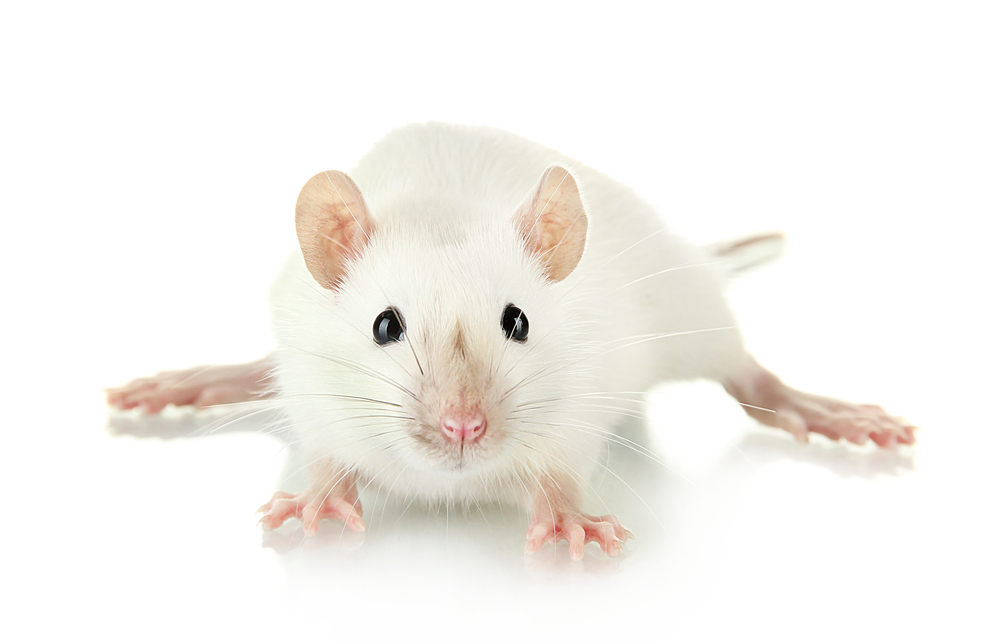DI-CMT Type B Mouse Model Reveals Features of Muscle Damage
Written by |

A mouse model of dominant-intermediate Charcot-Marie-Tooth (CMT) disease type B displays motor symptoms that are caused mostly by muscle damage, rather than peripheral nerve cell damage, a study found.
While the lack of nerve cell damage contrasts with findings in humans with the disease, the preclinical study suggests that patients may experience similar muscle damage that is overshadowed by major nerve damage.
The findings may help elucidate the underlying cause of DI-CMT type B (DI-CMTB) and guide the development of new therapies, the investigators noted. “The lack of the expected neuropathy in our mouse model may have allowed to unmask this feature that might also be present in neuropathy-affected humans,” they wrote.
The study, “Mice carrying an analogous heterozygous dynamin 2 K562E mutation that causes neuropathy in humans develop predominant characteristics of a primary myopathy,” was published in the journal Human Molecular Genetics.
CMT is a group of disorders caused by genetic mutations that impair the function of the peripheral nervous system, which extends nerve projections called axons that carry signals between the muscles and the brain. These axons are wrapped in an insulating substance called myelin, which allows more rapid transmission of nerve signals.
In individuals with CMT, nerve-muscle communication is impaired by damage to axons or the loss of the myelin sheath. DI-CMTB falls in between both CMT types, characterized by both axonal damage and diminished myelination, with intermediate nerve signal transmission speed.
But most studies examining how DI-CMTB-related mutations in the DNM2 gene result in disease symptoms have been conducted in cells grown in the lab. Conducting similar experiments in animal models could bring additional knowledge about such mutations and disease mechanisms.
Researchers at the Swiss Federal Institute of Technology, in Switzerland, now examined a mouse model of DI-CMTB carrying a disease-associated mutation in DMN2 called K562E.
The DNM2 mutant mice had slightly lower body mass and mild gait and motor impairments compared to healthy control mice at 2 months and 1 year. Surprisingly, the DNM2 K562E mutation did not induce any of the expected nerve or axonal abnormalities.
The mutant mice did display subtle, but distinct, muscle features. In a series of analyses of a skeletal muscle in the leg, significant nerve-muscle dysfunction was observed, including a slight decrease in muscle response to stimulation. No major nerve damage was recorded, indicating that the dysfunction resulted from muscle defects.
Further analysis revealed signs of muscle tissue damage in mutant mice, including damage to muscle fiber structure and an accumulation of immune macrophages that clean up cell debris following tissue damage. Macrophages also were found in the muscle extracellular matrix, which is important for muscle maintenance and function.
Muscle weight was significantly lower than controls at 2 months and at 1 year. A slight decrease in the nerve-muscle fiber connections and alterations to the types of muscle fibers present at both ages were signs of persistent muscle damage, but not of significant nerve loss.
An analysis of genes that increased or decreased in expression in the mutant mouse revealed higher levels of genes related to the extracellular matrix organization and inflammation-associated genes, consistent with the observed increase in macrophages. Genes involved in function of the mitochondria, the energy factories of the cell, and in energy-related metabolism were disproportionately decreased in the mutant animals.
Finally, the researchers analyzed a second type of skeletal leg muscle to determine if the muscle myopathy was consistent in other muscle types. Again, significantly decreased muscle weight, increased macrophages levels, and altered muscle fiber structure were observed in the mutants, suggesting that the damage extended to multiple skeletal muscles.
“Dnm2 wt/K562E mice were affected by a mild but definitive and lasting myopathy [muscle damage],” the researchers wrote.
The team suggests that the lack of nerve damage in this model likely “relates to differences between mice and humans,” explaining that “the exceptional lengths of peripheral nerves” in humans make them more vulnerable to degeneration.
“In agreement, some other mouse models for human neuropathies also do not (or only partially) recapitulate the neuropathology observed in patients,” they added.
Notably, the lack of nerve cell damage helped identify an otherwise hidden primary muscle damage in these animals, which might exist also in humans with the disease. “There are some hints that a primary myopathy might contribute to [DI-CMTB] disease also in humans,” the research team added.




